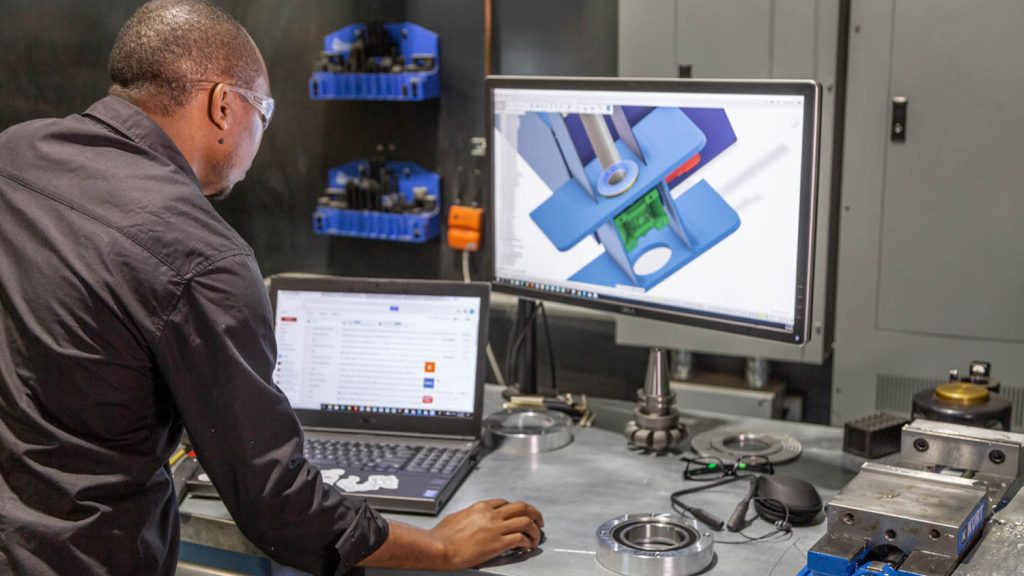Manufacturing Sustainability Insights (MSI), a new add-on from Autodesk, is designed to calculate a product’s carbon footprint long before it is manufactured. DEVELOP3D spoke to Autodesk senior sustainability manager Zoe Bezpalko and sustainable manufacturing specialist Matt Oosthuizen about the new software and how it can deliver more environmentally-friendly products
DEVELOP3D (D3D): When Autodesk started to discuss Manufacturing Sustainability Insights, or MSI, internally as a new product for designers, how did that conversation evolve? What can you tell us about the thinking behind it?
Zoe Bezpalko (ZB): Autodesk has been working on sustainability for over 10 years and this is a core component of our impact strategy. How do we lead by example, by showing that a company can focus on sustainability within all of its operations, have a net zero commitment and follow through with it?
Often, there is a disconnect between saying that your company is going to be net zero and will report its emissions at a company level, and then how you actually do that. How do you calculate the carbon footprint of a product, maybe one of the thousands of products that is put on the market every year?
Today, this is really disconnected in terms of workflow. There are very few tools that enable users to calculate carbon footprint early on enough to have an impact on the design process.
There is also a disconnect because even the companies that are pretty good at reporting on sustainability are completely disconnected from the products that they put on the market, meaning that they typically are going to calculate how much carbon they emit based on maybe their electricity and water bills, but not in terms of the design and manufacture of each product.
Matt Oosthuizen (MO): It’s a mixture of internal and external research. Research from McKinsey shows that in 80% of products, the main carbon emissions are linked to the design and manufacturing phase, so that really highlights the need to have a solution within those phases, so that a designer can understand the impact they’re having and make informed design decisions.

We also did internal research in our technology centres in Birmingham, UK, and in Boston and San Francisco, with a six- to eight-week project where we took the same product and designed it slightly differently with generative AI. And then we measured the energy consumption of the machines and material waste and created a bespoke lifecycle assessment for those components to compare them directly.
We thought that we needed to create a solution that can do this at a quick rate and give a pretty accurate read – not 100% accurate, but a ballpark figure of 70% to 80% accuracy.
D3D: Of course, MSI is still in its early stages as a commercially available product. How do you hope that it will evolve?
ZB: We saw the opportunity to start leading this type of research and putting the results into the hands of our customers. And we’re constantly talking to our customers about how we can do better.

There’s a lot that we can do better in terms of including transportation, which is already included in MSI but not in a very flexible way yet, so that’s something that we’re starting to think about, as well as including the product end-of-life.
Also how do we start connecting this data throughout the product lifecycle, but also throughout the reporting regulation and framework of a company itself? That’s really the opportunity we have with our platform. We’re starting to think about what type of platform services can exchange sustainability data from a lifecycle assessment to a reporting tool, so we can catalogue these needs and start working with our technology and product teams to understand the demand from our customers.
D3D: And what has so far gone into the plans for improving the software? How have you been researching, say, product lifecycle management technology to make the software more accurate, for example?
ZB: Right now, just a narrow list of materials and manufacturing processes are available through MSI. We also work with partners that are lifecycle assessment companies. MSI exists within the context of a partnership with Gravity Climate and we also have a partnership with SimaPro on a tool that will come out soon. And SimaPro is the leading lifecycle assessment software. So, we wanted to partner with them to help us to have the same accuracy of a real lifecycle assessment.
D3D: Why did Autodesk choose to make this software an add-on rather than an entirely separate program or an integrated update?
MO: The whole idea with Fusion is being able to have an end-to-end workflow all in one solution. You can brainstorm your design, manufacture it, simulate it and render it, all in one place. It would go against that vision if we were to make a separate solution that you then have to drag and drop something into later on. We want to focus on having users stay in Fusion.
D3D: Finally, how do you anticipate your users’ carbon emissions will change as they design products using MSI?
MO: Previously, they wouldn’t have known what impact the decisions they were making would have on their carbon emissions. So, this is a foundational solution that can give initial feedback to them. Hopefully it gets them on that trajectory. Now you can use sustainability as a metric to optimise your designs, and engineers do like to spend a lot of time optimising something! So we’re interested to see how this plays out.
This article first appeared in DEVELOP3D Magazine
DEVELOP3D is a publication dedicated to product design + development, from concept to manufacture and the technologies behind it all.
To receive the physical publication or digital issue free, as well as exclusive news and offers, subscribe to DEVELOP3D Magazine here






